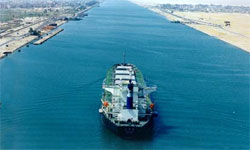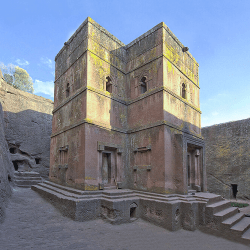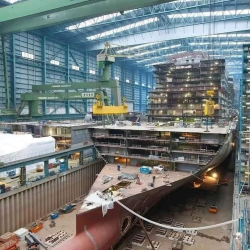How the traffic system in the Suez Canal works. Learn about daily convoys, pilotage rules, speed limits, and how long it takes ships to transit this global maritime artery.
The Lifeline of Global Maritime Trade
The Suez Canal is more than just a waterway—it’s a vital artery in the global maritime network. Linking the Mediterranean Sea with the Red Sea, the canal offers the shortest sea route between Europe and the lands lying around the Indian and western Pacific oceans. Every year, thousands of vessels transit this narrow passage, saving time and distance that would otherwise be spent navigating around the Cape of Good Hope.
To handle this massive flow efficiently, the traffic system in the Suez Canal is meticulously planned, structured, and constantly monitored. This system ensures safety, minimizes congestion, and maximizes the Canal’s capacity.
Daily Convoy Structure: Timing is Everything
Ships passing through the Suez Canal do not just enter at will—they join carefully timed convoys. Each day, three main convoys are organized to control and coordinate vessel movements.
1. Northbound Convoys from Port Said
- First Convoy: Departs at 0100 hrs (1:00 AM)
- Second Convoy: Departs at 0700 hrs (7:00 AM)
These convoys head south from Port Said, the northern entrance to the Canal, making their way toward the Red Sea.
2. Southbound Convoy from Suez
- Third Convoy: Departs at 0600 hrs (6:00 AM)
This convoy enters the Canal from the southern end at Port of Suez, moving northward toward the Mediterranean.
This strict scheduling helps ensure that vessels move efficiently without facing traffic jams or safety risks, especially in narrow sections.
Pilotage: Expert Navigation Required
One of the most critical aspects of the Canal’s traffic system is compulsory pilotage. Regardless of a ship’s size or technology, every vessel must take onboard four certified Suez Canal pilots during its passage.
These pilots:
- Navigate the vessel through complex or narrow stretches
- Ensure adherence to traffic rules
- Communicate with Canal authorities for clearance and updates
This multi-pilot system minimizes human error and ensures high safety standards throughout the journey.
Speed Limits: Controlled for Safety and Efficiency
Speed within the Canal isn’t just a recommendation—it’s a regulated requirement. The maximum allowable speed varies based on:
- Ship category
- Gross tonnage
- Weather conditions
Speed Guidelines
| Section | Speed Range (km/h) | Variables |
|---|---|---|
| General Canal Area | 13–14 km/h | Based on ship type |
| Southern Sector | 11–14 km/h | Wind velocity & tidal current |
These limits prevent damage to the Canal’s banks, reduce erosion, and minimize risks of vessel collisions or grounding.
Transit Duration: What to Expect
On average, a ship takes 12 to 15 hours to fully transit the Suez Canal. Several factors influence this duration:
- Vessel size and type
- Waiting time for convoy scheduling
- Weather and sea conditions
- Traffic density and Canal maintenance activities
Although delays occasionally occur due to mechanical failure, security alerts, or blockages (as seen in the Ever Given incident of 2021), the system has been reinforced to avoid such disruptions.

FAQs About the Traffic System in the Suez Canal
1. How many ships transit the Suez Canal daily?
On average, between 50 to 70 ships pass through the Canal each day, depending on demand and Canal operations.
2. Is it mandatory for all ships to have pilots onboard?
Yes, all vessels—regardless of size—must be guided by four Suez Canal Authority pilots during transit.
3. Why are there three daily convoys instead of free transit?
Organized convoys help manage traffic safely and efficiently, especially given the Canal’s narrow and shallow sections.
4. Can ships pass each other inside the Canal?
In most parts of the Canal, no. Passing is generally not allowed except in specific widened areas designed for this purpose.
5. What happens if a ship breaks down mid-transit?
Emergency protocols are in place. Tugboats and Canal engineers respond swiftly to tow or repair the vessel, ensuring minimal disruption.
6. Is there a toll for using the Canal?
Yes, all ships must pay a transit toll, calculated based on size, tonnage, and type of cargo.
A Well-Oiled Maritime Machine
The traffic system in the Suez Canal is a masterclass in logistical precision. From timed convoys and mandatory pilotage to controlled speeds and safety protocols, every element is designed to ensure the smooth and secure passage of one of the world’s most vital maritime routes.
Whether you’re a maritime enthusiast, a logistics expert, or just curious about global trade, understanding this traffic system offers a deeper appreciation for the engineering and coordination that fuels our interconnected world.









